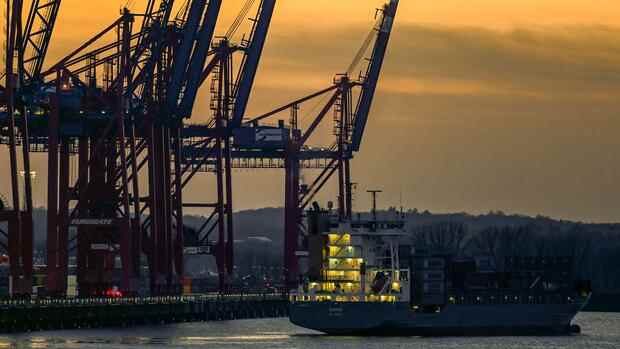In the corona crisis, some politicians called for greater independence of the European economy from foreign competitors. But that could be expensive.
(Photo: dpa)
The term bottleneck describes a condition, but not its origin. What is meant is a shortage of a certain good. The economy is currently experiencing various shortages, whether in wood, gas or microchips. The consensus opinion is that the shortages simply arise from insufficient capacities.
The corona crisis had led to a mismatch between supply and demand. Supply chains are disrupted, and at the same time people want to spend the money they have saved. The capacities are too small to meet this demand – at least that was the case at the beginning of the delivery bottlenecks and early summer.
That means less production and higher prices, which harms the economy. Current economic growth is therefore particularly weak in the industrialized nation of Germany.
In the meantime, however, the question must be asked whether practical capacity bottlenecks are actually still the germ of delivery bottlenecks. Of course, some bottlenecks, such as those in semiconductors, cannot be resolved casually. However, the demand has partially normalized again and overall some additional capacities have been built up.
Top jobs of the day
Find the best jobs now and
be notified by email.
Rather, the second variant of the toilet paper effect seems to have used. While households have largely given up the hoarding of toilet paper, this effect now seems to be taking hold at companies.
Resilience or “black zero”
The experience of the disrupted supply chains means that companies arm themselves. You build up increased storage again. “Resilience” is the corresponding buzzword.
It is a bit of a counter-model to the black zero model of warehousing that has been in operation for years, which in this case has nothing to do with the national debt, but rather describes the state of warehouses that are just so tight that current production can be covered with it. That is maximizing for the return of the company – if there is no crisis.
For the further debate about material shortages it is now crucial to become clear about this phenomenon. Do we want to build a more crisis-resistant but less profitable corporate landscape?
As usual, the answer will have to be somewhere in the middle. Companies will need a crisis buffer in their warehouses in the future. Only the banks or major customers will use this as a criterion when selecting their business partners in the future.
But it must be warned against building large-scale storage capacities. Right now, this would continue to be at the expense of production and additionally stifle the economic upturn.
Ricardo model has been in place for 200 years
Above all, the realization that delivery bottlenecks are increasingly based on expectations rather than capacity problems must stop the idea of de-globalization. In the past month, politicians and economists have been reflexively demanding that resilient supply chains mean simply building up capacities domestically.
This may be beneficial for a few key technologies in which the production costs are only of secondary importance due to their importance. But to believe that Germany must now set up its own production facilities for medical masks or consumer electronics, reading the Ricardian model of foreign trade is recommended.
The British economist David Ricardo had already written this down in 1817. The cost advantages outlined in it, and thus the prosperity effects of international trade, are still valid today – not without restrictions, but in essence. The fact that an economic theory has remained largely unchallenged for more than 200 years should also be a hint for those who dream of renationalization.
More: Financing of the traffic light projects questionable due to economic dropouts
